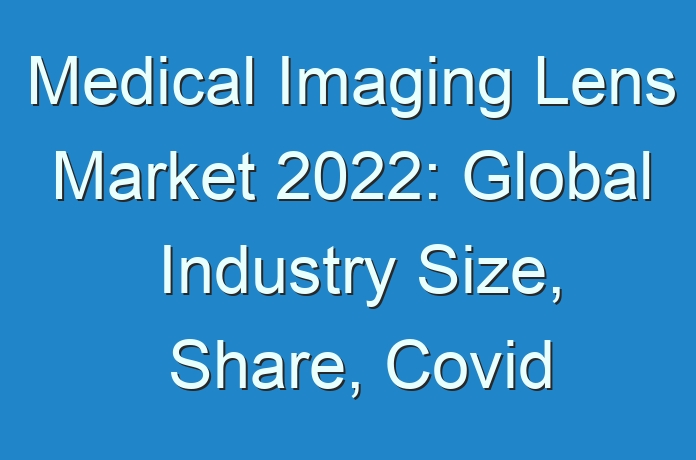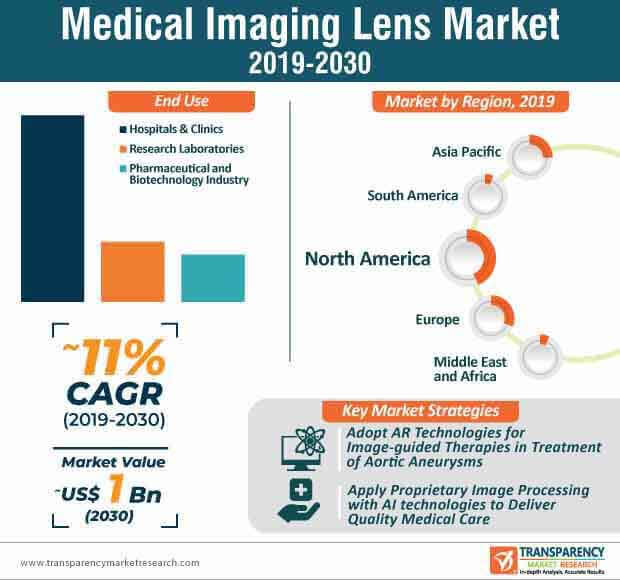
AR Increases Flexibility in Interventional Procedures for Treatment of Aortic Aneurysms
Augmented Reality (AR) is revolutionizing the medical imaging lens market. AR is expected to play a pivotal role in challenging applications in the field of image-guided therapy. For instance, leading U.S. multinational technology company Microsoft is using its AR technology in HoloLens 2 holographic computing platform, along with Philips Azurion-a next-gen image-guided therapy platform to address challenges faced by clinicians in interventional procedures.
The AR involved image-guided therapy is anticipated to create incremental opportunities for companies in the medical imaging lens market, since the technology helps to increase flexibility during interventional procedures. With the help of AR, clinicians are able to move around the patient during a procedure while receiving relevant patient information. AR techniques are gaining popularity in procedures involving endovascular repair of aortic aneurysms.
Request a sample to get extensive insights into the Medical Imaging Lens Market https://www.transparencymarketresearch.com/sample/sample.php?flag=S&rep_id=39332

3D Printed Holographic Lens Help Efficiently Target Brain Regions for Imaging
Ultrasound is a popular technique used for imaging of soft tissues as well as developing fetus. Hence, researchers in the medical imaging lens market are harnessing the advantages of ultrasound to better brain imaging practices. For instance, researchers at the Polytechnic University of Valencia in Spain introduced a 3D (3 Dimensional) printing holographic lens that deploy ultrasonic sound waves in the brain. As such, holographic lens also hold promising potentials in assessing drug delivery for the brain.
The medical imaging lens market is estimated to expand at an astonishing CAGR of ~11% during the forecast period. However, ultrasound is subject to distortion in the brain due to the skull, thus preventing it from focusing on the brain tissues. Hence, companies should collaborate with researchers to innovate in 3D printed holographic lens that are capable of generating complex patterns in beams that reach target brain regions.
Strategic Acquisition Project Fuel Adoption of Medical Imaging Lens Worldwide
Inorganic strategies such as mergers and acquisitions are bolstering the growth of the medical imaging lens market, which is estimated to reach a value of ~US$ 1 Bn by 2030. For instance, in December 2019, leading Japanese multinational photography and biotechnology company, Fujifilm Holdings Corporation, announced to acquire Hitachi in order to increase their product portfolio in the company’s diagnostic imaging business. Companies in the medical imaging lens market are entering into strategic collaborations to combine proprietary image processing techniques with AI technologies to improve the quality of medical care.
Company acquisitions help leverage global sales networks. In order to enhance the procedures of diagnostic imaging systems, companies are tapping into opportunities in Information Technology (IT) and electronic health records to improve patient outcomes. As such, the market for medical imaging lens is moderately consolidated with leading players accounting for ~45%-50% share of the market. Hence, emerging companies should enter into agreements with leading market players to acquire a strong global presence.
Stuck in a neck-to-neck competition with other brands? Request a custom report on Medical Imaging Lens Market https://www.transparencymarketresearch.com/sample/sample.php?flag=CR&rep_id=39332
AI Cameras Assist in Scanning Potential COVID-19 Patients at Crowded Locations
Since healthcare systems in the U.S. are lagging other countries in the distribution of COVID-19 (coronavirus) testing kits, companies in the medical imaging lens market are manufacturing AI (Artificial Intelligence) cameras to detect individuals with fever possibility. For instance, Austin-based company Athena Security is gaining global recognition for its security cameras integrated with the AI technology that helps detect potential COVID-19 patients. The demand for security cameras with thermal imaging and computer vision tech is surging amidst the ongoing coronavirus era.
Lockdown relaxations have increased the stress of staffs at airports, hospitals, grocery stores, and voting locations. This is another key driver, which is generating value-grab opportunities for medical imaging lens manufacturers who should increase their production capacities in security cameras. Security camera detection systems are in high demand for the scanning of larger crowd at various locations.





